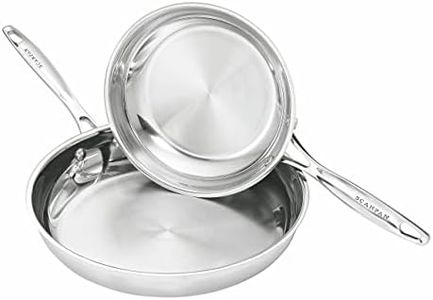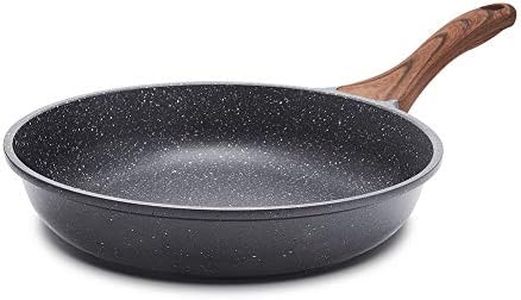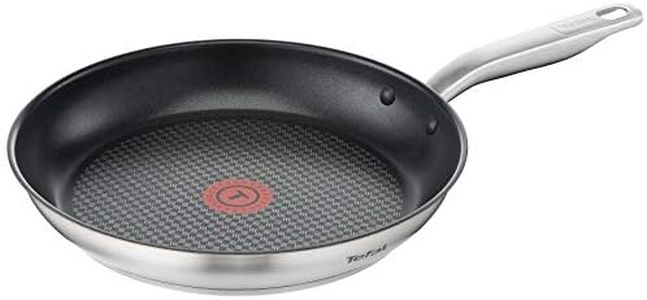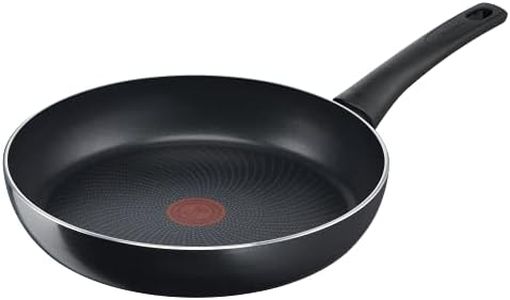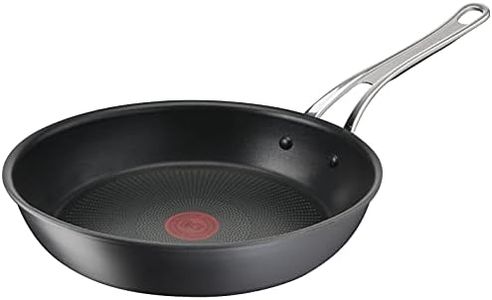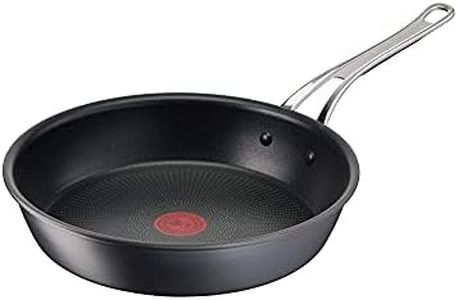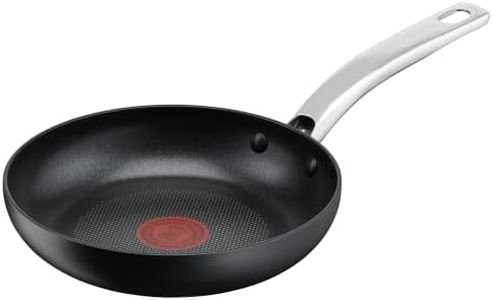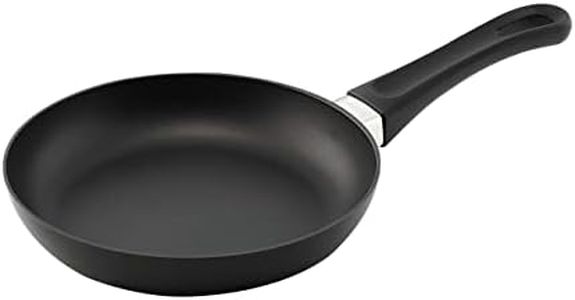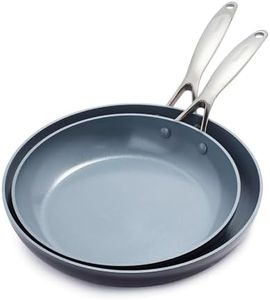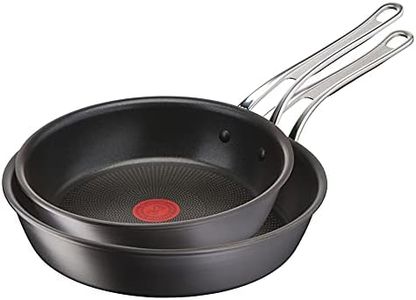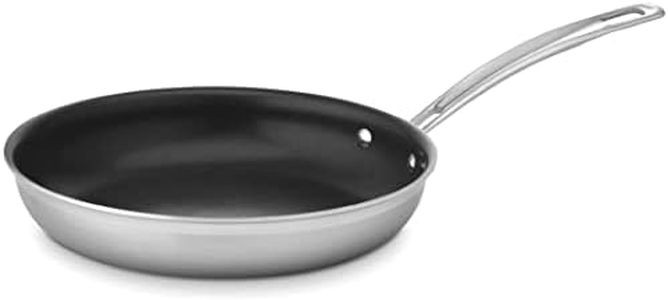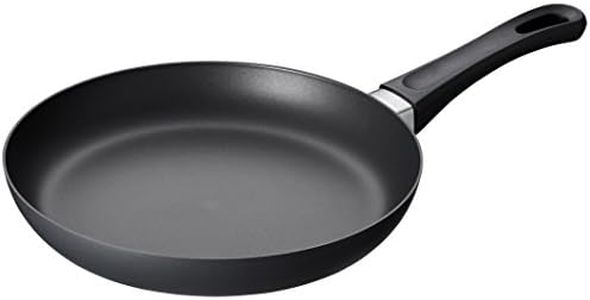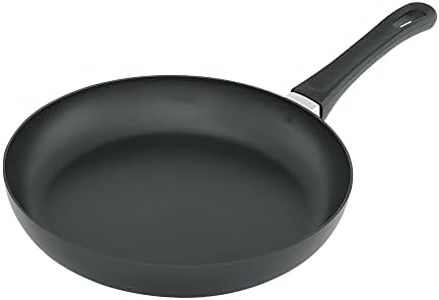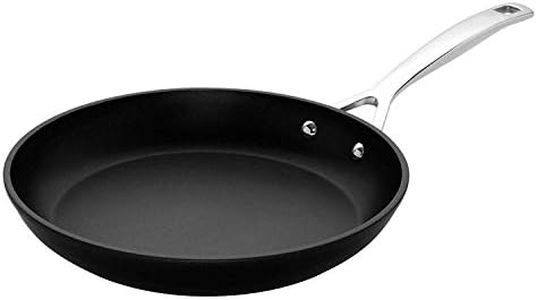We Use CookiesWe use cookies to enhance the security, performance,
functionality and for analytical and promotional activities. By continuing to browse this site you
are agreeing to our privacy policy
10 Best Nonstick Fry Pans
From leading brands and best sellers available on the web.Buying Guide for the Best Nonstick Fry Pans
Choosing the right nonstick fry pan can make a significant difference in your cooking experience, from easy cleanup to consistent results. The key is to understand which features truly matter for your needs. Start by thinking about how often you cook, the kinds of dishes you make, and the sizes you typically need. By focusing on specs like material, coating type, diameter, handle design, oven safety, and compatibility with stovetops, you can narrow down the best option that fits your lifestyle.Nonstick Coating TypeThis refers to the substance used to create the nonstick surface, most commonly PTFE (like Teflon) or ceramic. Nonstick coating is crucial because it determines how easily food slides out and how simple cleaning will be. PTFE coatings provide excellent release and are long-lasting, but some people prefer ceramic as it is considered more environmentally friendly and usually free from certain chemicals. If you frequently cook delicate foods like eggs, a smooth, high-quality PTFE surface may be ideal, while those looking for an eco-friendlier or slightly higher-heat option might lean toward ceramic. Your cooking habits and personal preferences should guide your choice.
Pan MaterialThe material underneath the nonstick layer—typically aluminum or stainless steel—impacts the pan’s weight, heat conduction, and durability. Aluminum pans are lightweight and heat up quickly and evenly, making them a good choice for everyday cooking, while stainless steel versions are heavier and often more durable, with a tendency to retain heat longer. Lighter pans are easier to handle, especially for quick meals or people with wrist issues, whereas heavier pans offer more even cooking, which is useful for foods that require steady heat.
Pan DiameterDiameter refers to the width of the cooking surface, usually measured in inches. This is important because it determines how much food you can cook at once. Smaller pans (around 8 inches) are suitable for single servings, eggs, or small portions, while medium (10 inches) can handle two to three servings, and larger (12 inches or more) are ideal for family meals or bigger recipes. Think about your usual portion sizes and whether you often cook for one or several people to select the right size.
Handle Design and ComfortThe handle affects how comfortable and safe the pan feels in your hand, especially when moving it between stovetop and counter or oven. Look for handles that feel sturdy, are properly balanced, and stay cool during cooking. Some pans include ergonomic grips or silicone coverings for comfort. If you have limited strength or smaller hands, a contoured, well-balanced handle will make cooking easier and safer.
Oven and Dishwasher SafetyThis spec tells you whether a pan can be used in the oven or cleaned in the dishwasher without being damaged. Oven-safe pans broaden your cooking options, letting you start dishes on the stove and finish them in the oven, but check the maximum temperature they can withstand. Dishwasher-safe pans make cleaning easier, but frequent machine washing may wear out the coating faster. If you like convenience or multi-step recipes, prioritize these features according to your habits.
Stovetop CompatibilityStovetop compatibility means whether the pan works with all heating sources like gas, electric, and induction. Not all nonstick pans are suitable for induction cooktops, which require a magnetic bottom. If you have or plan to use an induction stove, be sure to look for compatible pans; otherwise, most options will work on gas and electric stoves. Your current and potential future stovetop should influence your selection.
